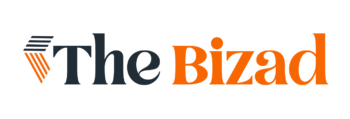Currency trading, also known as forex trading, is the act of buying and selling currencies in the foreign exchange market. It is the largest financial market in the world, with a daily trading volume exceeding $6 trillion. Margin Trading Facility (MTF) trading, on the other hand, refers to a facility provided by brokers that allows investors to buy securities by borrowing funds, thereby leveraging their positions. While both currency trading and MTF trading involve leverage and the potential for high returns, they differ significantly in terms of markets, risk factors, and trading strategies. Understanding these differences is key to making informed investment decisions.
Currency Trading: A Global Market
Currency trading operates in a decentralized global market, meaning that there is no central exchange for trading currencies. Instead, transactions are conducted over-the-counter (OTC) between participants like banks, financial institutions, corporations, and individual traders. The primary objective in currency trading is to profit from fluctuations in exchange rates between different currency pairs. For example, a trader might buy EUR/USD, betting that the euro will appreciate against the U.S. dollar.
One of the main attractions of currency trading is its liquidity. The forex market operates 24 hours a day, five days a week, providing ample opportunities for traders to enter and exit positions. This liquidity also ensures that trades can be executed quickly, with minimal slippage. Currency trading offers high leverage allowing traders to control large positions with a relatively small amount of capital. However, this leverage also amplifies the risks, as losses can exceed the initial investment.

MTF Trading: Leveraging Equity Markets
MTF trading, or Margin Trading Facility, is a service provided by brokers that allows investors to purchase stocks by borrowing funds, effectively increasing their buying power. This facility is commonly used in equity markets, where traders can buy shares by paying a fraction of the total value and borrowing the rest from their broker. The primary advantage of MTF trading is the ability to enhance returns through leverage. For example, if an investor has $10,000 and the broker offers a 4:1 margin, the investor can buy up to $40,000 worth of stocks.
MTF trading is particularly popular among active traders and those who engage in short-term trading strategies. However, it is important to note that MTF trading carries significant risks. Just as leverage can magnify gains, it can also magnify losses. If the value of the securities purchased on margin declines, the investor may be required to deposit additional funds to maintain the margin or risk having their position liquidated by the broker. This makes risk management crucial in MTF trading.
Differences and Opportunities
The primary difference between currency trading and MTF trading remains in the underlying markets. Currency trading involves forex markets, where traders deal with currency pairs, while MTF trading is primarily used in equity markets, focusing on stocks and other securities. The risks and rewards in both types of trading are influenced by market volatility, leverage, and the trader’s ability to manage risk effectively.
Conclusion
Both currency trading and MTF trading offer some unique opportunities and risks. The choice between the two depends on an investor’s risk tolerance, market knowledge, and investment goals. Understanding the differences between these trading methods is crucial for maximizing returns and managing risks effectively.









